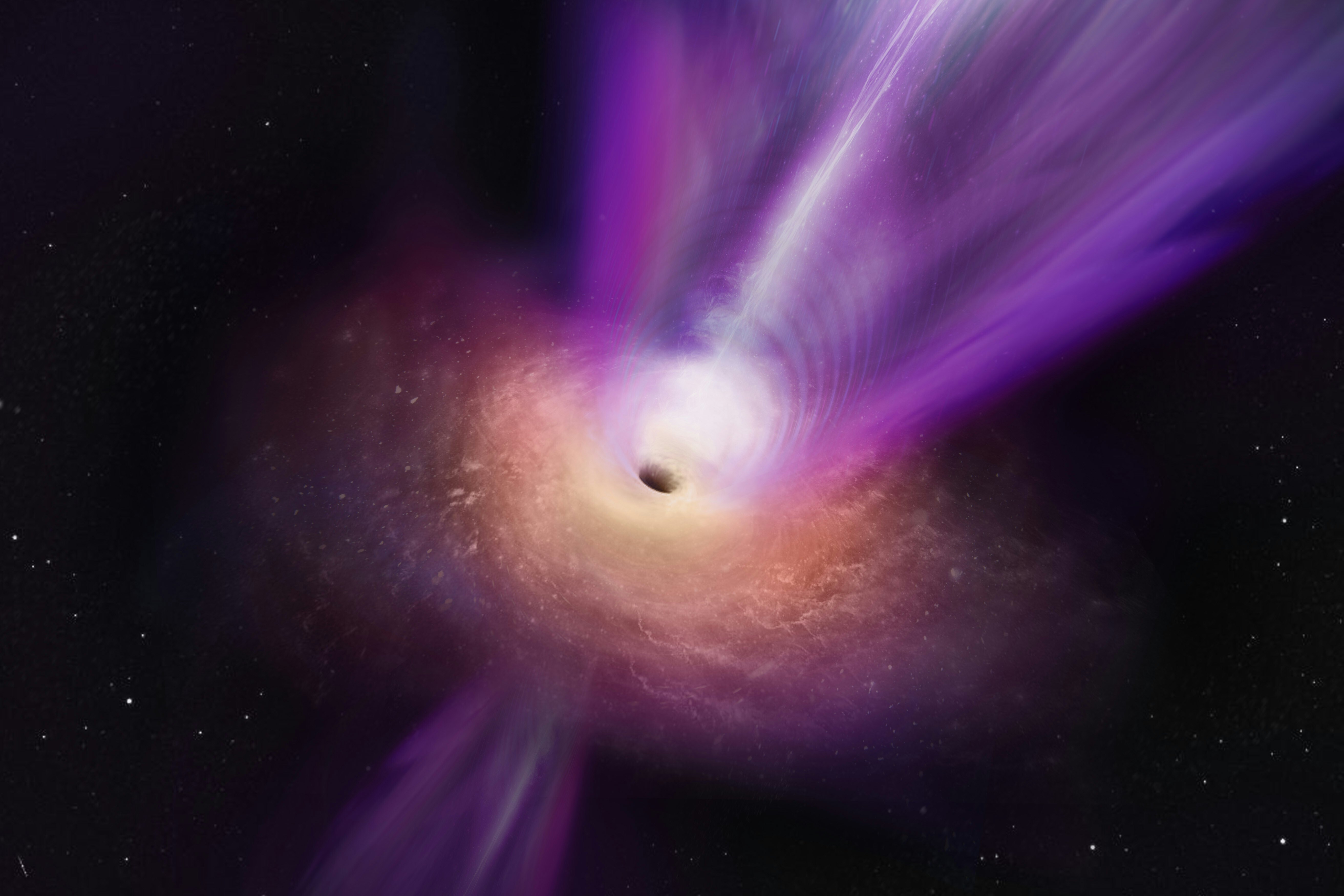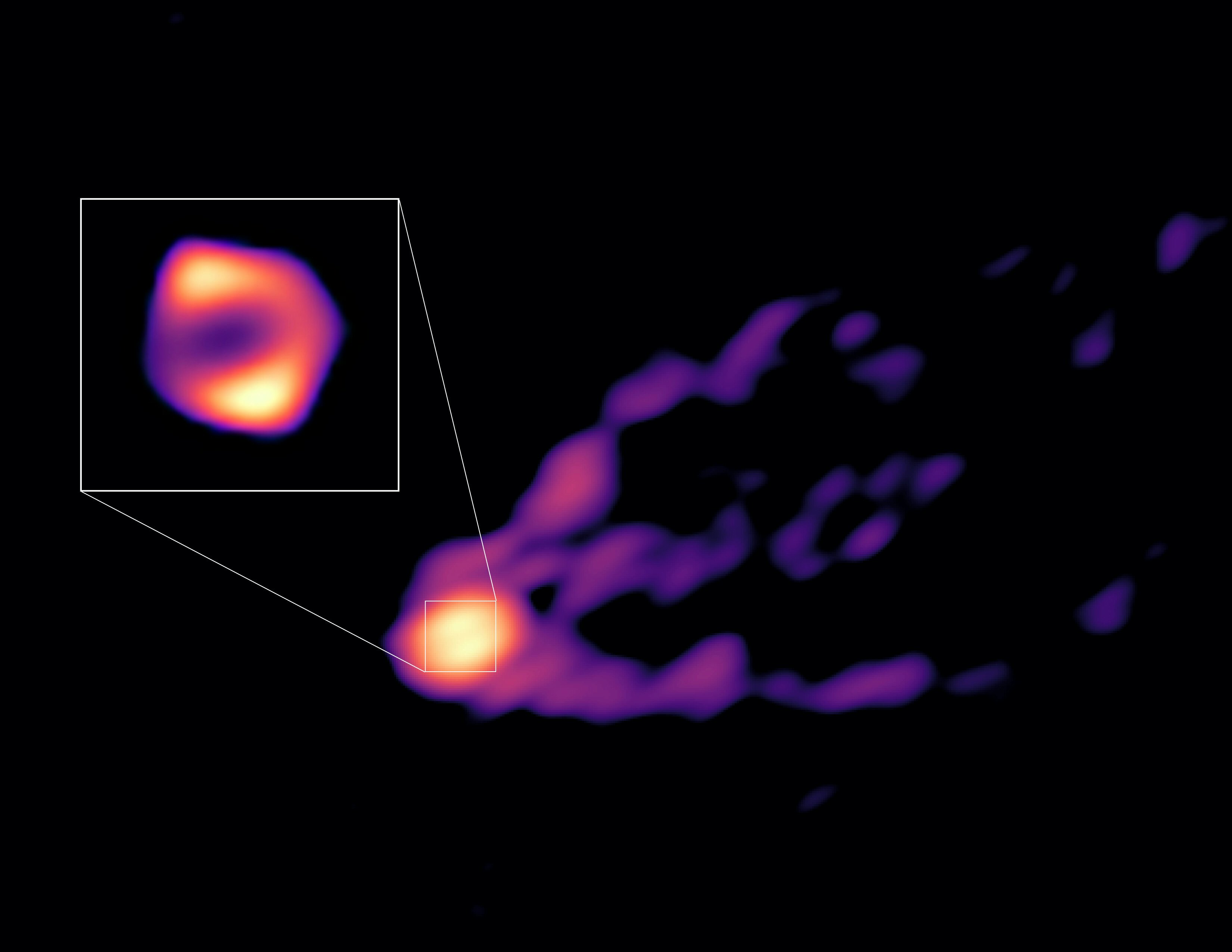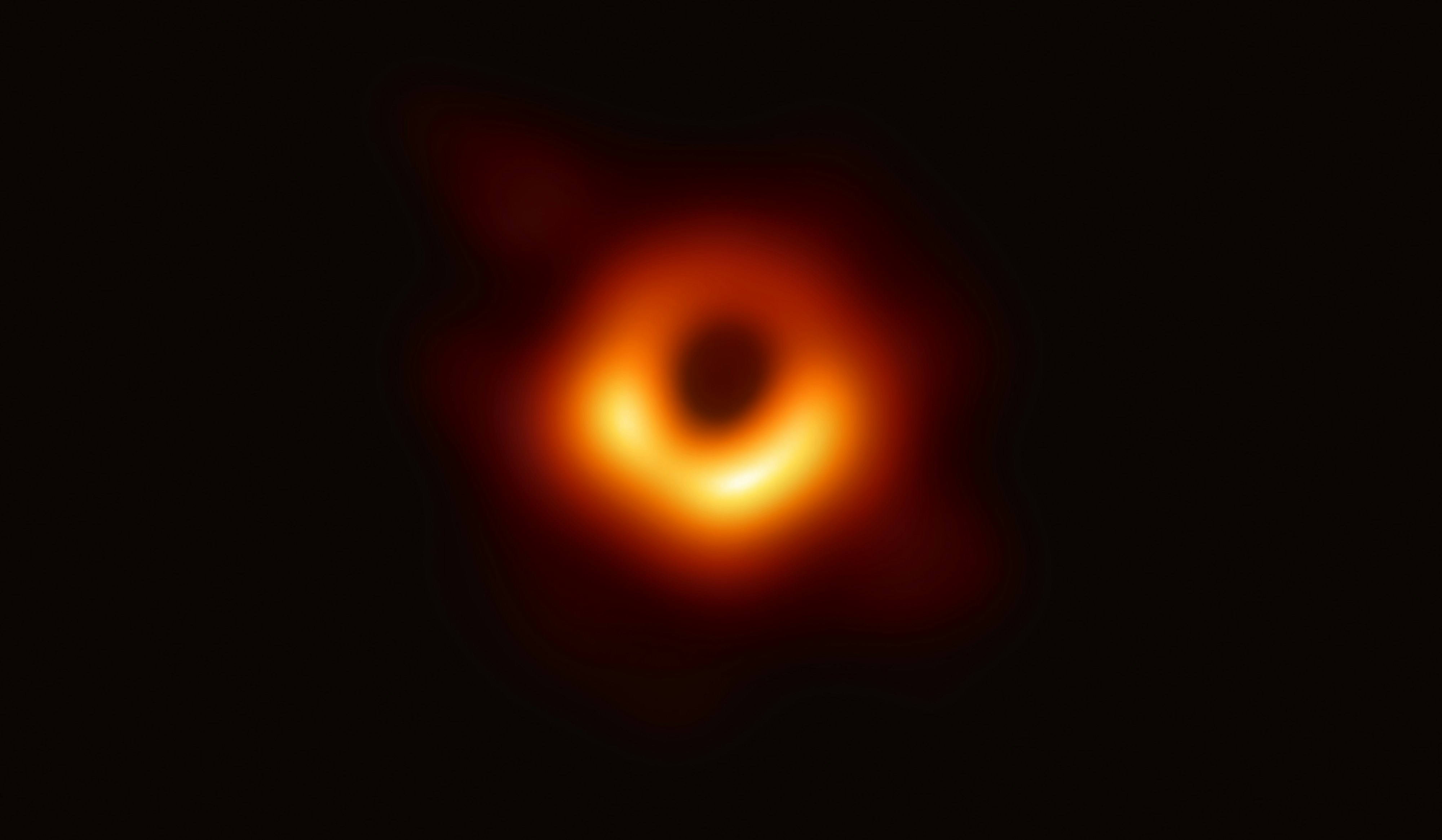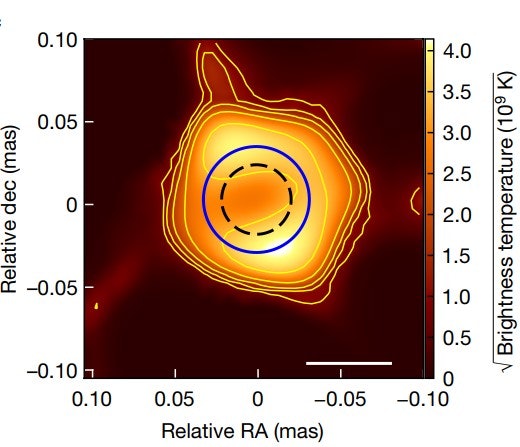
Four years ago this month, an image changed the field of astrophysics. It revealed, for the first time, a direct look at the shadow of a black hole.
The shadow is a pit of gravity so powerful that not even light can escape. Almost everything falling towards a black hole will plunge into the abyss, though it may take several thousand years. Before it reaches the abyss, it circles what’s known as an accretion disk. On Wednesday, an international team of researchers published a study in Nature where they ascertained the ring’s location around the black hole that starred in the historic image.
Black holes are a paradox: Despite their ominous intensity, they are vital to the fabric of our existence. Astrophysicists think that supermassive black holes occupy the cores of most galaxies in the Universe. This particular black hole occupies the heart of galaxy Messier 87 (M87), located 54 million light-years away from Earth in the constellation Virgo. It has roughly 6.5 billion times the mass than that of the Sun.
This supermassive black hole has a shadow just slightly larger than the size of the Solar System, categorically small in cosmic scales. But the accretion disk is packed with material churning to such an extent that it makes M87’s center particularly luminous.
“Black holes are supposed to be a dark object. But it turns out some of the black holes in the Universe are...one of the brightest in our Universe.”
“Black holes are supposed to be a dark object. But it turns out some of the black holes in the Universe are...one of the brightest in our Universe,” astrophysicist and study co-author Kazunori Akiyama tells Inverse. Akiyama is part of the Event Horizon Telescope (EHT) collaboration, which created the historic 2019 black hole image.
Part of the reason is that black holes have a very strong gravity, and as they devour the material near them, the material’s energy is released in some form, according to Akiyama. Black holes are what he calls a “pretty efficient system” to extract their energies. This produces the glow from M87, visible across multiple wavelengths of light.
“But we don’t know, actually, the detailed process. One of the exciting frontiers [of research] is actually what’s happening in the very vicinity of the black hole,” Akiyama says.
The root of a galaxy-wide jet
One highlight of the new study is that researchers saw a connection between the accretion disk and another extreme feature of M87: a plasma jet longer than the galaxy itself.
The jet, which appears to stem from the accretion disk in the new work, is a structure that can affect the intergalactic medium, Akiyama says. It might impact how galaxies evolve over time, too.

The new work had some surprising revelations. “We thought it [the jet] was coming more from closer to the black hole. So, inside, kind of the dark part of the disk. But it looks like the part of the jet we see is coming from the lit-up part of the disk, which is interesting,” study co-author and astrophysicist Alan Marscher tells Inverse.
“We think there may be two layers to the jet: a thin spine, and then surrounding the spine is a thicker, what we call a sheath, like the sheath of a knife or a sword,” Marscher says. They might be seeing that M87’s disk is connected to the jet’s sheath, and maybe the jet’s spine is “more connected to the black hole than [it is to] the outer part of the disk.”
The jet is made of material that won the lottery. Most stuff in the accretion disk falls into the black hole. But when charged particles move, they can generate magnetic field lines. On Earth, the liquid outer core of its center creates the magnetic field that activates handheld compasses and provides a canvas for auroras. Around a black hole, material moves “like water swirling down a drain,” Marscher says, within different orbits. This affects the magnetic field lines produced from the churning material.

“Like twisting a wire,” Marscher says. “And if you twist a wire enough, you get a spring. And we think that the twisting of the magnetic fields is what drives the jets.” Some particles ride these lifelines away from the black hole and travel beyond the galaxy’s border.
But this is educated speculation. Astrophysicists aren’t entirely sure how you get these jets. “That’s a big question, and that’s what we’re trying to answer,” he says.
When Marscher isn’t teaching astrophysics to undergraduate and graduate students at the University of Boston, he researches blazars. These are supermassive black holes that launch bright jets heading straight toward us.
M87’s black hole jet is angled just right so as to be an “almost blazar,” he says. This allows researchers to learn about both the accretion disk and jet.

“Actually, in some senses, it’s better to see it [the jet] more from the side because you can study it better,” Marscher says. A blazar, because its beam is pointed towards Earth, outshines the accretion disk, and astrophysicists cannot see it.
To study this frenetic corner of the Universe, the team employed observatories on almost opposite sides of the planet — the Atacama Large Millimetre/submillimetre Array (ALMA) in Chile, the Greenland Telescope (GLT) in the Arctic, and the worldwide Global Millimetre VLBI Array (GMVA) — to watch M87 during the same 12-hour shift. As the planet rotated, their locations changed, giving the data enough nuance to reveal the location of the ring and the hot stuff churning within it.
Akiyama is very excited about the new work. Black holes are “a very effective powerplant in our Universe,” he says. Being able to image the entire system, including the central accretion flow and the jet, is “an incredible achievement.”







